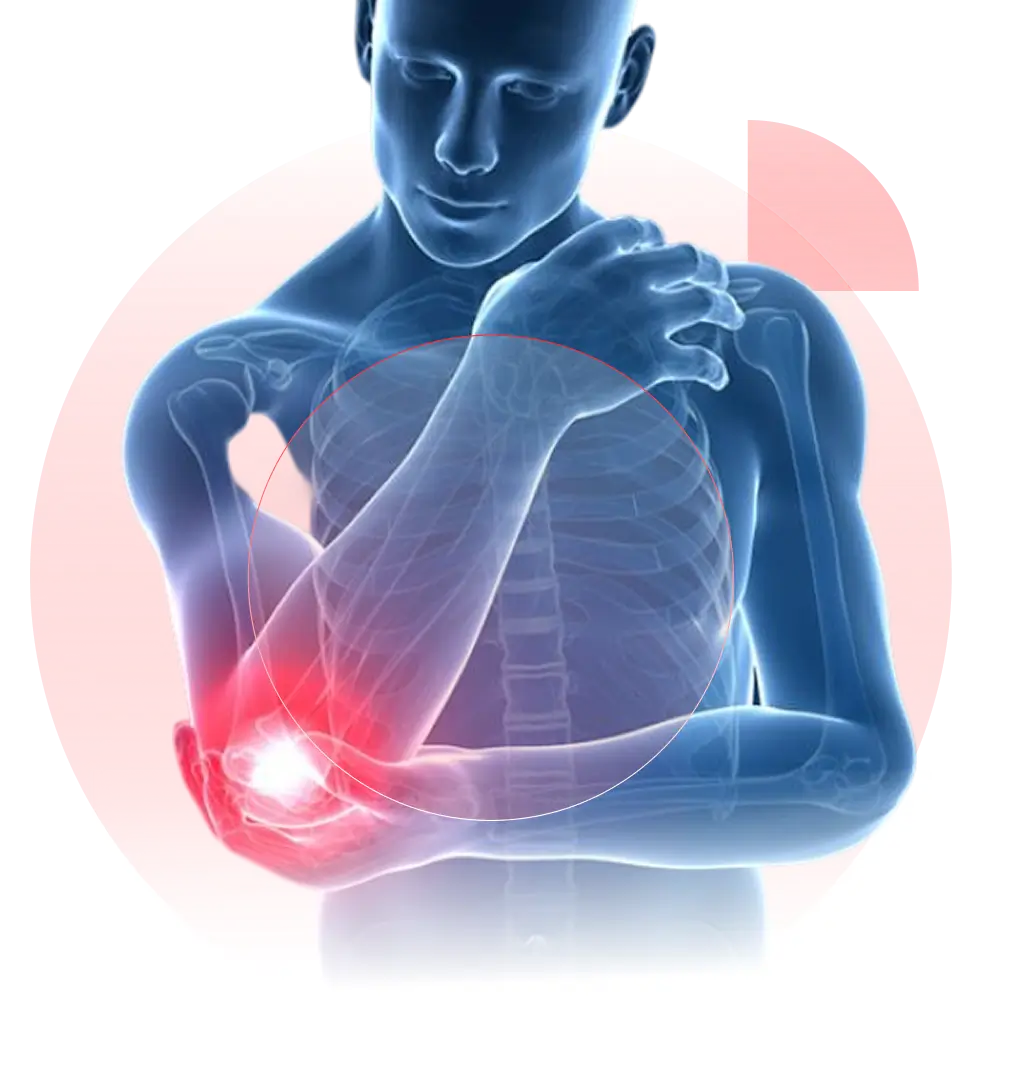Elbow Injury & Tennis Elbow Specialists in Dallas— Accidents, Sports & Falls
Most elbow pain comes from injury—strained tendons, inflamed bursae, or trauma from a fall or collision. Overuse injuries like tennis elbow are common, but sudden pain after an accident often means a tear or fracture. Without early evaluation, healing takes longer and grip weakness persists. Learn more about Shoulder Pain and Wrist & Hand Pain.

Pain gripping or
lifting
Aching after accident
or sports play
Tenderness on outside
of elbow (tennis elbow)
Sharp pain after fall
or collision
Weakness when
turning door handles or
lifting bags

Why Choose Us?
Fellowship-trained orthopedic & pain specialists
Injury-focused: sports, accident, and fall trauma
Non-opioid-first: therapy, cortisone, PRP
Minimally invasive procedures when needed
Physical therapy and bracing
Fluoroscopy-guided cortisone injection
Platelet-Rich Plasma (PRP)
Tenotomy or minimally invasive tendon repair
Request Your Same-Day Elbow Injury & Tennis Elbow Evaluation
Don’t wait in pain — our expert spine specialists are available for same-day evaluations.
Yes. Although tennis elbow is often linked to overuse, trauma from a car accident, fall, or direct blow can damage the tendons around the elbow. This leads to pain, swelling, and grip weakness. Our specialists diagnose injury-related elbow pain quickly and build treatment plans that may include therapy, cortisone, or PRP. Learn more on our Arm & Shoulder Hub.
If elbow pain follows an accident, fall, or sports collision, or if it limits your grip strength or disrupts sleep, you should see a doctor immediately. Early evaluation prevents small tendon injuries from turning into chronic tears. Our specialists provide same-/next-day visits, imaging, and treatment across seven DFW locations. Learn more about care options on our Elbow Pain page.
Yes. Targeted therapy is a proven, first-line treatment for tennis elbow and traumatic elbow injuries. Strengthening the forearm muscles relieves strain on tendons and restores function. When paired with bracing or injections such as cortisone or PRP, therapy improves outcomes and reduces recovery time. See more about therapy programs and non-surgical care on our Therapies page.
X-rays are usually the first step, helping rule out fractures after a fall or collision. MRI and ultrasound may be used when tendon tears, bursitis, or soft-tissue damage are suspected. Imaging ensures that treatment—whether therapy, injection, or surgery—is matched to the exact injury. Learn more about related conditions on our Shoulder Pain page.
Yes. Cortisone injections reduce inflammation and provide fast relief for tendon-related elbow injuries. Platelet-Rich Plasma (PRP) is also used to promote tendon healing after trauma or repetitive stress. Both approaches are non-opioid and help patients return to daily activities faster. Learn more about biologic injections and non-surgical care on our PRP page.
Delaying treatment after an elbow injury can lead to tendon scarring, stiffness, and chronic weakness. Early diagnosis ensures that therapy, injections, or minor procedures are effective before more damage occurs. Our specialists focus on fast evaluation and tailored treatment plans so you can recover grip strength and avoid surgery. Explore more options on our Elbow Pain page.